|
Dear Azami, I’ve been a fan of this article series for a while now, so I thought it appropriate to send in one of my decks for some much-needed advice.
Let me start with the problem. I 99% of the time play Aggro decks over anything else. It is just my preferred method of handling things. Well, my brother
The commander is Oloro, Ageless Ascetic. I run only eight counterspells, because I want my group to interact a little and I would like to keep it at or Here is the decklist: Oloro, Hoarder of Life Creatures Planeswalkers Enchantments Artifacts Instants and Sorceries Lands 11x Plains 11x Island 10x Swamp I appreciate the help you can offer me. Also, I’m on a pretty tight budget at the moment, so any changes are going to need to be pretty cheap. –Jacob |
Well, control decks are hard – but that doesn’t mean you’re on the wrong path or anything. The key problem, I think, is how the deck is currently
positioned to take control – it’s light on card draw and mass removal, relying on its Commander for the former and running up against the unintended
consequence of the budget problem: good sweeper spells tend to be expensive, and a control deck needs enough of them to reasonably deploy two or three of
them over the course of a game. Best-in-class staples like Damnation cost far too much for any reasonable budget, and even an Oblivion Stone will cost you
a double-digits chunk of resources. We can still reach for the B-team on your budget, though, and get good results… at a certain point it doesn’t really
matter exactly which sweeper effects you’re playing so long as you have enough of them. So long as they’re all reasonably functional, it’ll work out in the
end.
The other side of the issue I’m seeing is that once you have control you don’t really have any elements that let you keep it; yes, you have pinpoint
removal and countermagic, but in Commander the best defense is to take over the board with something powerful. This is hard to do, but a few cards you
could play would allow for an army-in-a-can effect that puts you ahead on the board after you’ve used your sweepers as roadblocks. We will need to
dramatically shift around your creature base in order to have board control cards and strong kill mechanisms, so that once you’ve gotten ahead and are in
control you can close the game out (or at least take out one of your opponents) before you lose control.
With that said, let’s get to work!
Mana Fixing
First things first, you don’t need quite as many lands as you’re playing. 43 is a lot, especially with a couple of mana rocks along as well, and we will need the space to up your creature count. I am going to pull four of these slots and drop the deck down to 39 lands, which should be plenty
once we’ve streamlined your mana artifacts as well later on. Mostly what we’re running into here is that we need to add some more cheap but good dual lands
if we can get them, and while I’d like more of them, we’d need to either allow for more lands that come into play tapped (which I don’t want to do
here) or start spending on rare dual lands that will improve your manabase at the expense of your budget. I’m content with cutting four lands entirely and
replacing nine more of them, letting us add one utility land I think works particularly well (on the cheap, at least) with your Commander and eight more
dual lands that will help you draw your colors at the right time.
OUT:








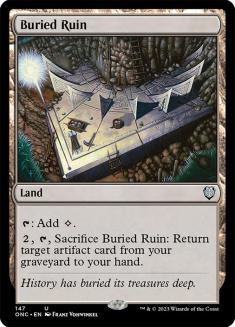
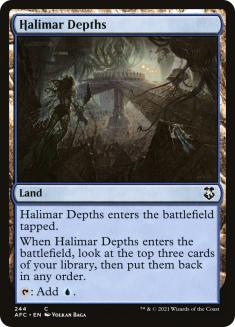
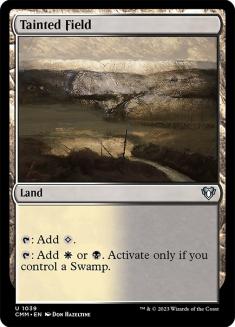
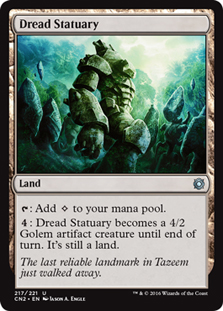
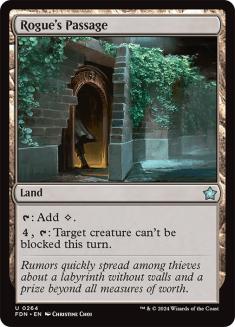
IN:
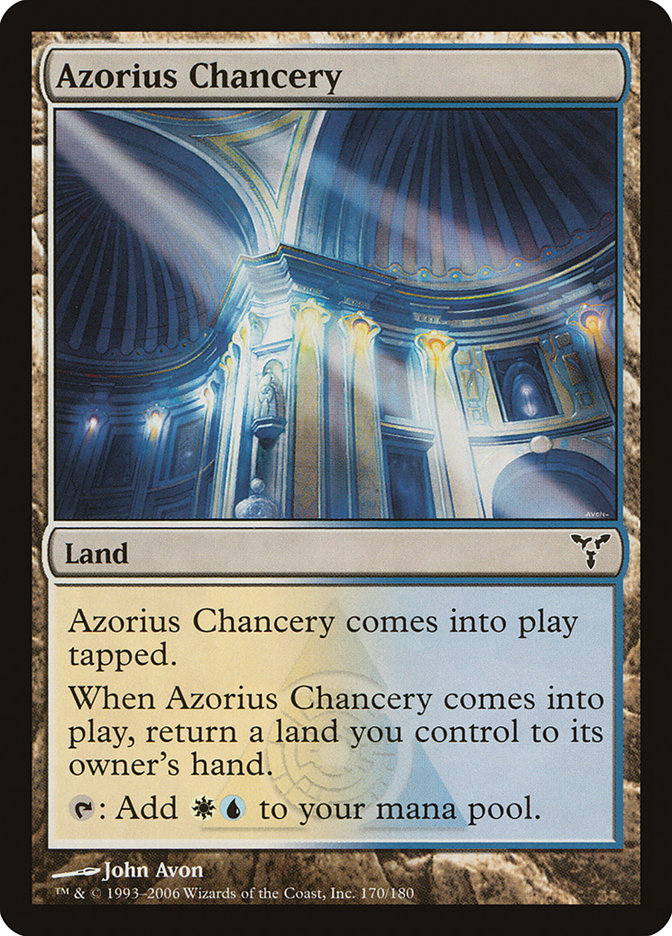
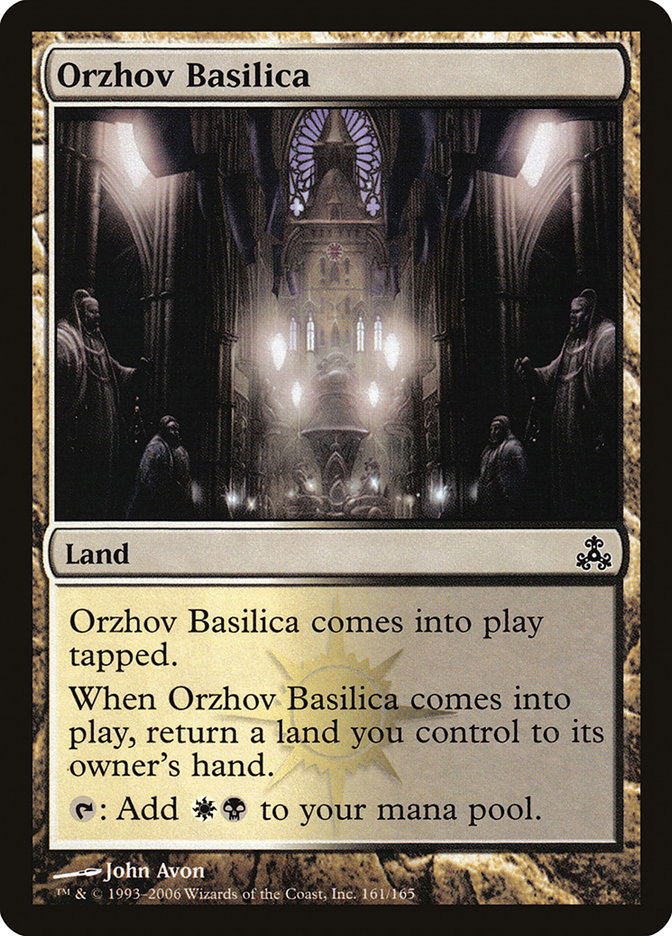
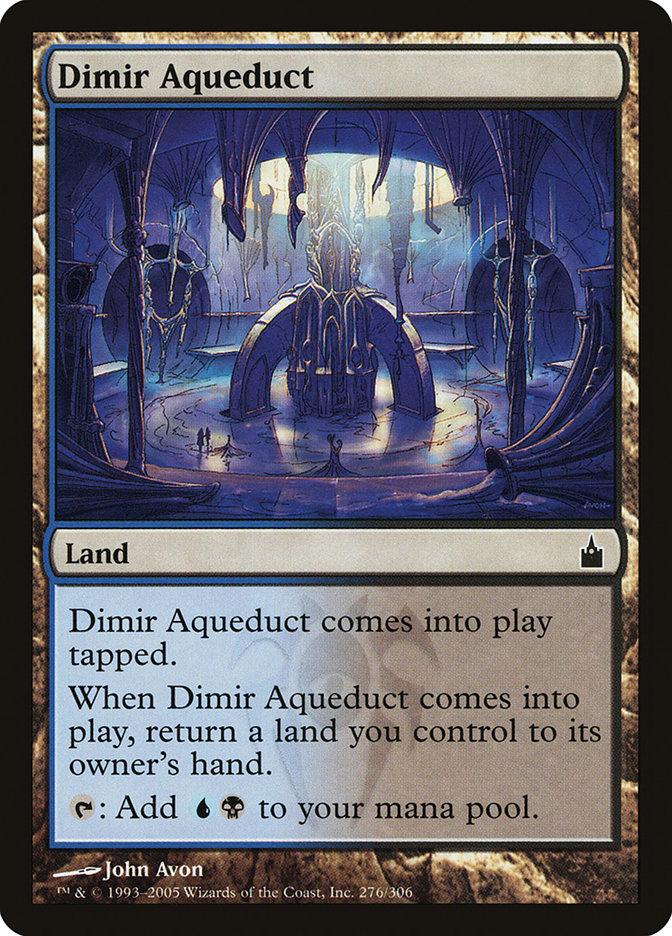
Thanks to Ravnica Block, well more like thanks to both of the Ravnica blocks, you can get good color-fixing at common (and thus on the cheap).
Bouncelands are kind of like card advantage – they make sure you get to the higher reaches of your mana curve, because drawing one of these is like drawing
two lands – and having this much color-fixing available to you will help make sure you are able to cast the various double-colored spells in all three
colors just by increasing your overall color density.
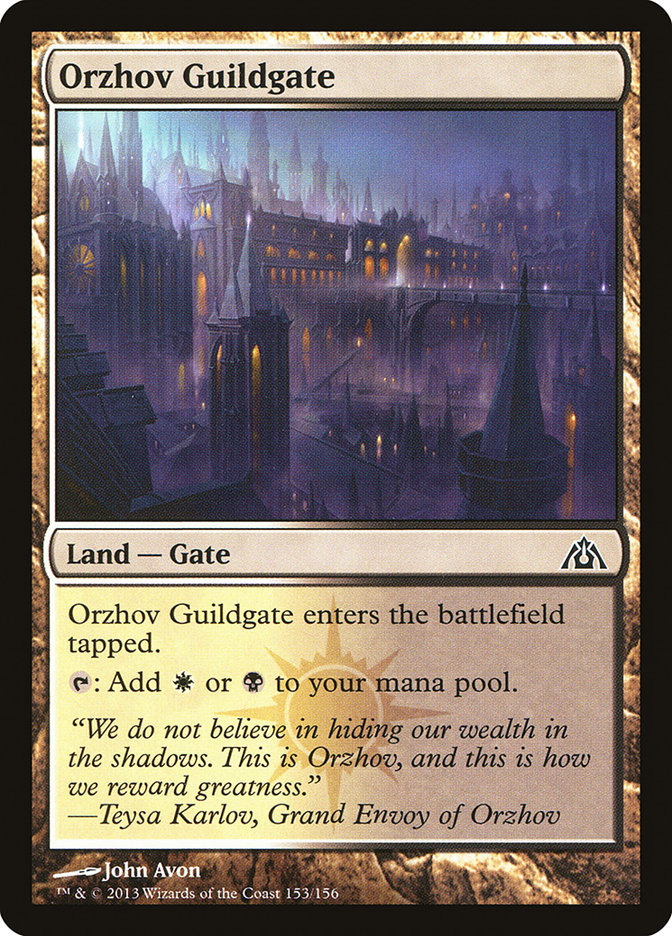
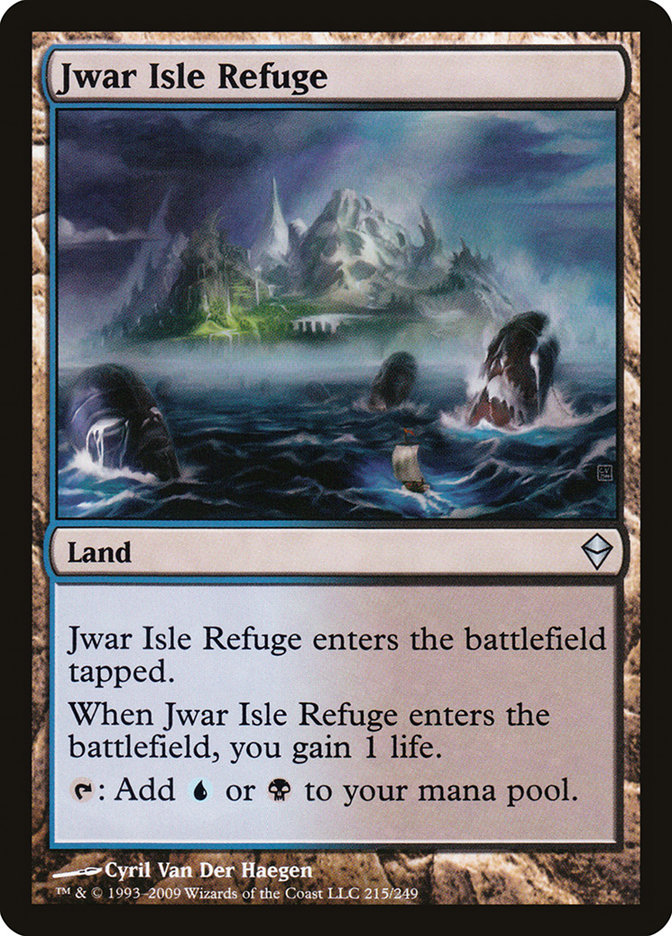
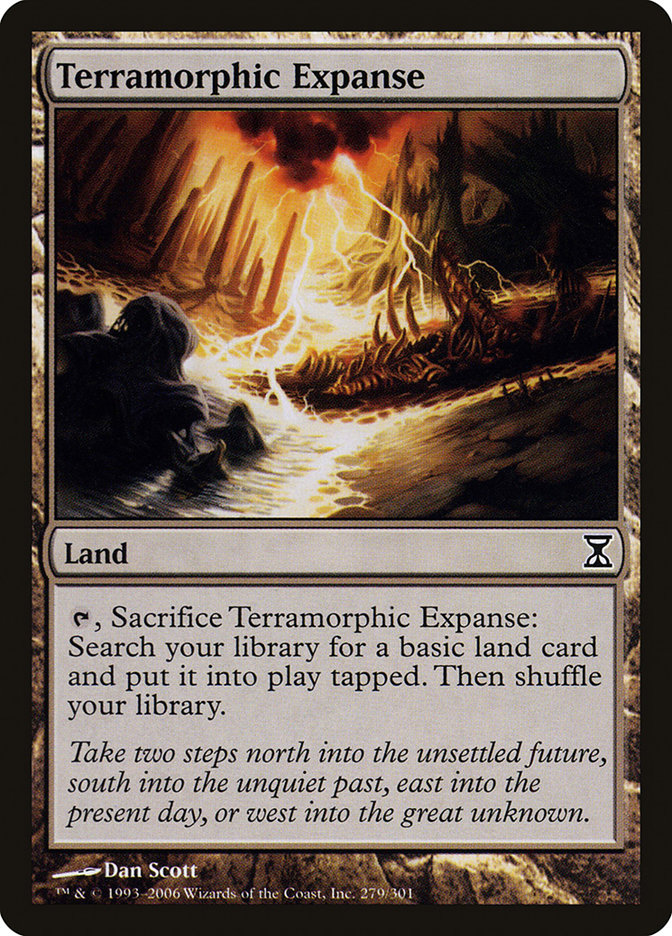
These three come to us just from playing the cycle-completion game; you had one half of the Evolving Wilds / Terramorphic Expanse duo, two of your three
Guildgates, and you were missing one of the two Refuges you could be playing as well. Each of these cycles is cheap enough that they can be found
painlessly but good enough that they’re going to improve your deck just by letting you increase the access to mana of all of your colors in any given game.
Sure, I’d rather have a Watery Grave than a Jwar Isle Refuge pretty much all of the time, but that price tag difference is absolutely huge for a
budget deck. The option of coming into play untapped – even at the cost of two life points – is worth more to me than the possibility of getting a life
when you play your Refuge… but the opportunities lost by picking the dual land that costs twenty times as much are far more damaging to the deck overall.
Cheap works, we’re going to come out with 42 changes for $43.56, but only by having the discipline to not even want $10 dual lands in the first place.
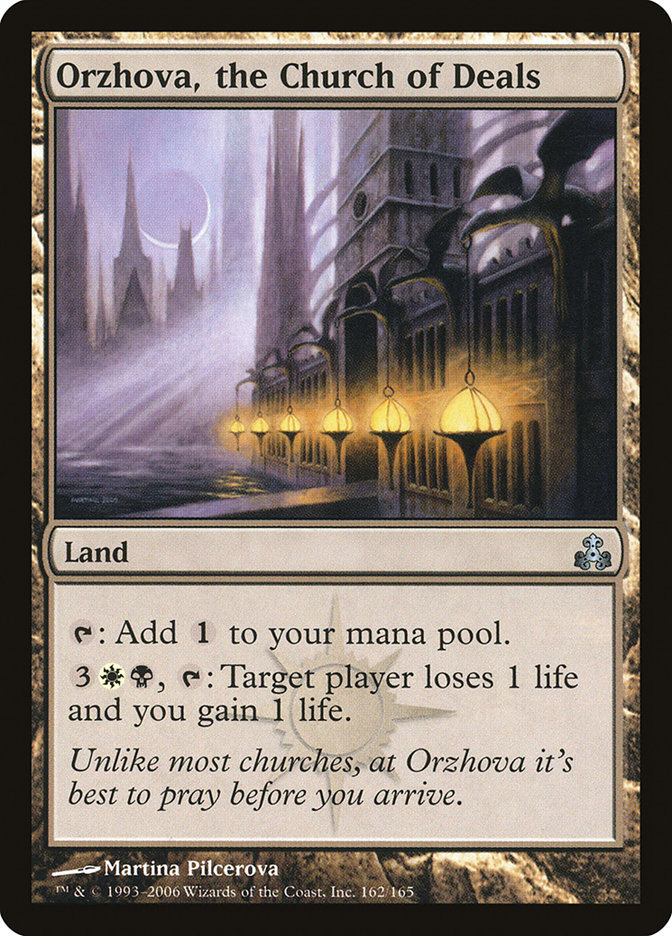
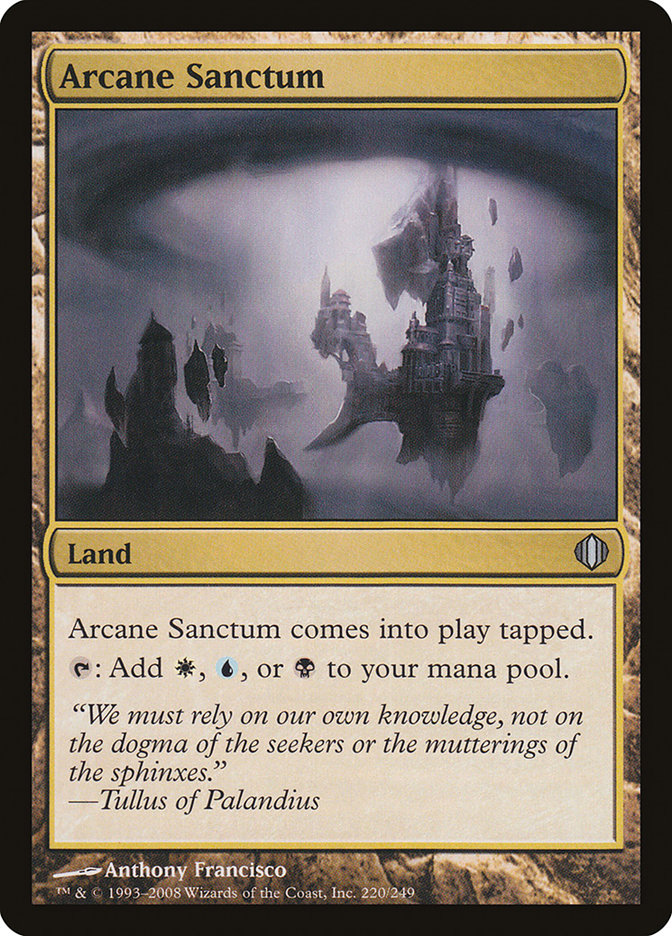
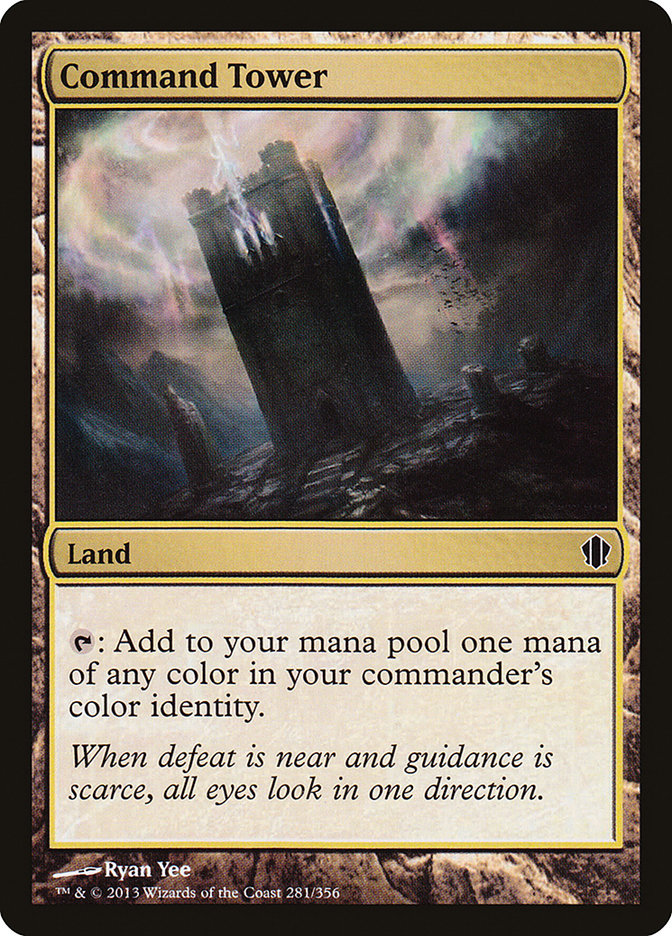
One of these is not like the other… but that doesn’t mean that it doesn’t belong. You’d added Rogue’s Passage presumably as a way to sneak a fattie
across the red zone for damage, but all it’s really doing is helping make sure that later in the game you can somehow close out the game with
Oloro if you have to. If you’re already going to have Oloro, I’d rather build around something that triggered the card-draw/life-loss ability than
something to make it unblockable in the large majority of games; sure, your opponent will go to plaid and gain ludicrous life sometimes, forcing you to
kill with Commander damage, but most opponents are going to be taken down by non-Herculean packets of damage and the card advantage side is more relevant
there. It’s not often that the Church of Deals gets remembered in the first place, and it happens to mesh quite well with a controlling Oloro build – you
keep up your mana for countermagic if you need it, and if you don’t, you still get to do something synergistic with your Commander.
The other two are just high-powered fixing at a great price. Command Tower’s reprinting in the second series of Commander products has really helped a lot
as far as price goes, and your Shards of Alara tri-land will also be a solid addition – even with access to the more expensive dual lands, this one would
still make the cut, so we’re going to pick both of these up despite the fact that I’m aiming to keep it below a dollar per card when we’re replacing things
on a budget.
Moving on to the artifacts, we’ll still mostly be working on your manabase, but small upgrades can make a big difference in how your deck will play out.
(Arti)Facts Of The Matter
Without tutoring, the Scepter, Crown, and Throne of Empires are kind of weak – and adding significant chunks of tutor power would get quite expensive. We
can add Beseech the Queen and Increasing Ambition cheaply enough, but Demonic Tutor and Enlightened Tutor start to get pricey, and at a certain point it’s
just easier to back away from tutoring at all and not worry about it. I did that, then circled back to this section again later after deciding that pulling
this off was exciting enough for you that I shouldn’t stand in the way of your fun just because I don’t think it’ll work; we have plenty of other darlings
to kill already without needing to step on this trio as well. That said, we cut the following:
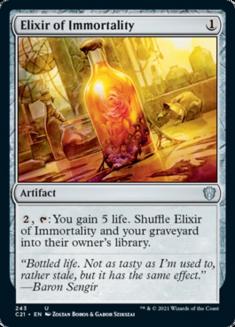
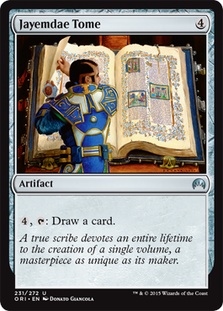
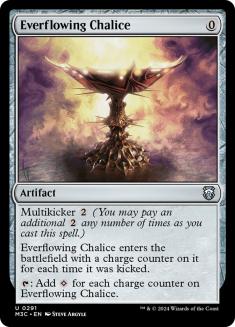
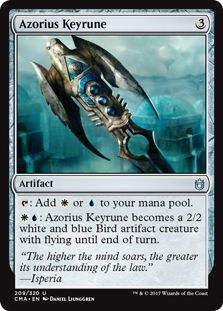
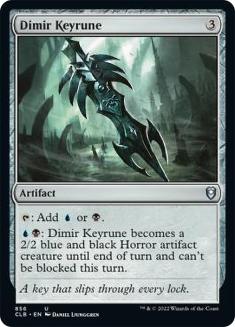
This section is more about qualitative changes than quantitative ones, though – I think we want to have more-or-less the same sorts of things here, I just don’t believe that each of these is the right card for the job. I don’t like three-mana fixers that aren’t able to defend themselves – putting a basic land into play counts just fine for that, otherwise we’re at Darksteel Ingot or bust – and I certainly am not optimistic enough to think the creature side of your Keyrunes will ever matter. It would be much more likely that Cluestones would have relevant abilities, and then of course I could get all cutesy and replace your Everflowing Chalice with a Mind Stone in order to add yet another artifact accelerant you could sacrifice later for a card… but in this deck you’re going to need to make sure you don’t fall too far behind. You cannot really afford to durdle around with Cluestones, you need access to the best cheap fixers you can get in this space:
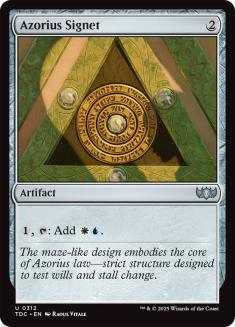
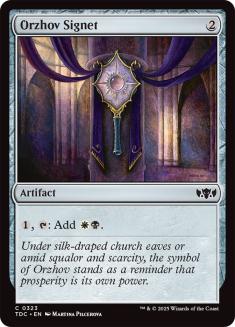
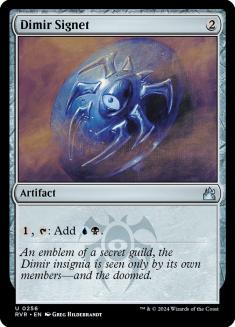
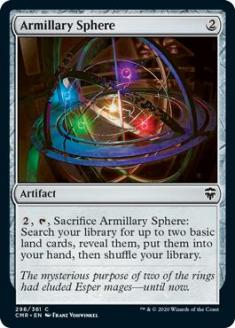
These help make sure you can play powerful cards somewhere in the neighborhood of on-time, and like our improvements to the land base it’s part cycle
completion and part color saturation that we’re focusing on – you left off the Orzhov Keyrune even though it would probably have been the strongest
creature option of the three thanks to the lifelink, and so I started by completing the cycle and adding an Orzhov fixer to your Azorius and Dimir ones…
and then swapped all of them into Signets, because two mana is much less than three mana is. It also helps that Signet-type effects, anything that can tap
for both colors of mana at the same time rather than just one or the other, will strongly stabilize your budget manabase that somewhat relies upon drawing
its colors smoothly by chance rather than by design. You can’t play even spreads of basic lands across all three colors and have it work perfectly every
time, but here’s to hoping that you draw your Azorius Signet when you’re Swamp-heavy (and so on for the other two colors).
And we still have one slot left to us here, where we can upgrade your Jayemdae Tome:
Well of Lost Dreams – Oloro has its lifegain trigger whether it’s in play or in the command zone, so as long as it doesn’t get tucked or have
something weird happen, Well of Lost Dreams will draw more cards each turn (and draw them far more cheaply!) than Jayemdae Tome could hope to match. It’s a
bit narrower, yes, but since Oloro doesn’t even care whether or not you get around to casting it, the ‘combo’ isn’t a fragile one that can be broken up
just by killing a creature – so long as the Well is in play, it’ll trigger at least once a turn, letting you draw two more cards for just two mana.
Anything after that is gravy, but it is technically possible thanks to a few other cards you’re playing, like Daxos and the Rhox Faithmender.
Moving on to the spells, we’re going to pull out half of the cards you’re currently playing and target them for upgrades. You’d said you didn’t
want to go more counter-heavy, and that was very adamant when you said it, so I assume you won’t mind if I end up taking you lighter in
the countermagic department instead – I think six counters will still be enough to stop all of the most-important spells without leaning on them as a
crutch in game after game. Mostly what you need more of is card drawing and Wrath effects, but we have the opportunity to make some direct card upgrades
while we’re at it.
How To Master Expensive Sorceries
We begin with the cuts:

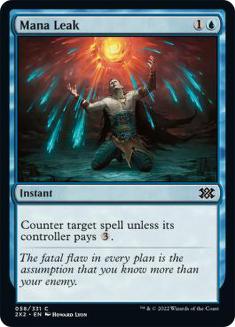
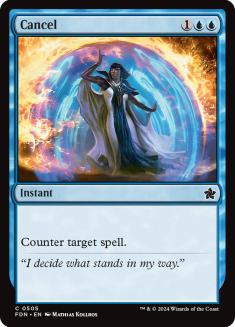
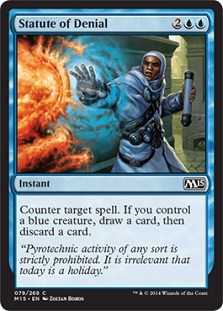
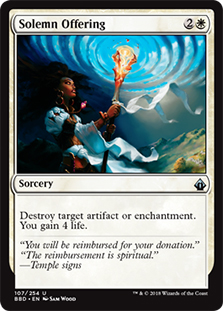
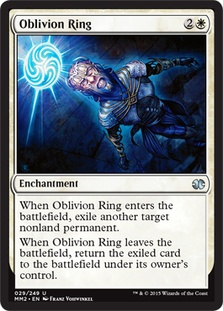
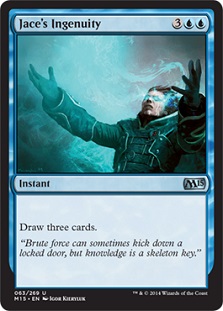
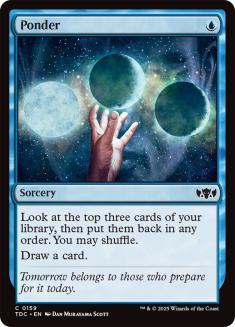
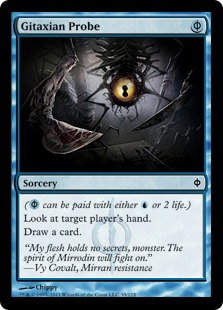

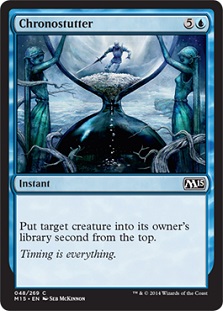
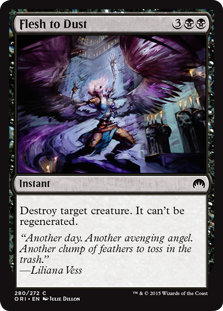
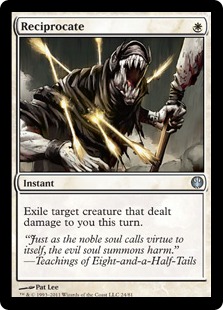
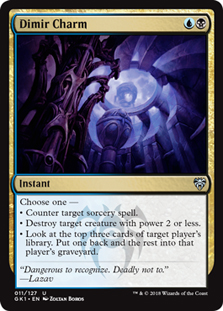
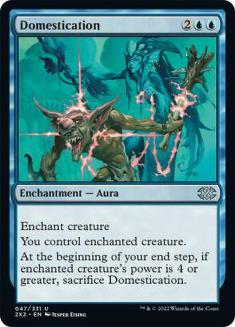
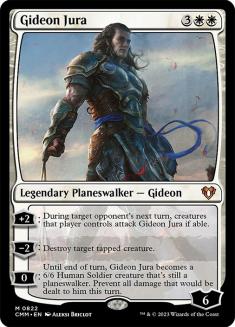
Some of these cards are filling the right role but are the less-optimal version of something you could be playing (even with the low budget), so we’re
going to upgrade them to a better version while we can. The rest will be making room for more sweepers and card drawing, and it’s amazing how high the
quality of cards you can get goes without spending a lot of money…
IN:
Arcane Denial, Counterspell, Overwhelming Intellect – I cut Mana Leak for Arcane Denial because I’d rather have a hard counter and a cantrip; a lot of
people look at this card and fret over giving an opponent two cards, but I mostly look at wanting to stop something horrifically bad for me and
still get a card back out of the deal. Cancel upgrades to Counterspell very easily, because the difference between keeping up three mana and only having to
keep up two mana is bigger than it sounds – your Cancel may work well enough, but Counterspell is just a full mana better. And as to Statute of Denial,
first I considered just replacing it with Dismiss to show how awkwardly bad the situational card manipulation is, you can actually just draw a card for the
same price with no ifs, ands or but’s. Instead, I wanted something that fit the card-draw slot… and Overwhelming Intellect is a counterspell for a huge
creature and a massive card draw spell. I have had it stuck in my hand once or twice, but I’ve basically never lost a game in which it resolved
and put four or more cards in my hand, and that power level is the kind of pedigree you have to go looking for when you’re on a budget.
Control Magic, Condemn, Murder – We cut your five-mana Murder effect for the three-mana original. You can go cheaper still if you wanted to, but have to
start making trade-offs as far as what you want that removal spell to miss or what hoops you are willing to jump through, and you can go more expensive too
by getting Hero’s Downfall instead (where the cost increase is budget, not mana). Condemn replaces Reciprocate because tucking is generally better than
exiling, and not taking the damage is definitely better than taking the damage. While I guess there are corner-cases where Reciprocate
can stop Heartless Hitsedegu, the large bulk of damage you take in Commander is from noncreature permanents or attacking creatures, so this still hits
everything Reciprocate was likely to stop and does so before you take the hit, not after. Control Magic replaces Domestication directly, just getting rid
of that “this card disappears if very common situation X happens” that really prevents Domestication from breaking into the big leagues in quite the same
way that Control Magic or Treachery did in their day.
Snuff Out – I wanted another spot removal spell that hit creatures, and this one has the best possible mana cost – “free” – if that is what you need to
control the board. I’ve found this card to be more and more powerful as decks grow more mana efficient, letting you proactively impact the board while
still having your shields up if you need them to be. Slaughter Pact can do the same, but I’d rather pay four mana up-front when I can afford to or four
life if I can’t than to have to make a promise to pay on layaway that includes the phrase “you lose the game.” Spite and comedic effect are very big in
this format, and people will try and make you lose to your own Pact much more in this format than in any other. (It also doesn’t hurt that Snuff
Out is cheaper, since it wasn’t a rare.)
Dismantling Blow, Opportunity, Oblation – Jace’s Ingenuity is upgraded to Opportunity; once we’re going there, I’d rather pay six for four cards than pay
five for three. Oblation is here to replace Oblivion Ring because hiding a problem permanent behind an O-Ring is just fraught with problems at the
fundamental level, opponents are going to have built their decks to be able to remove that class of permanents one way or the other, possibly at beneficial
times where it would be incredibly awkward for that threat to suddenly return. Tucking is better than exiling, so we keep the flexibility and gain instant
speed as well by switching it to Oblation. (Again, letting your opponent draw two cards is fine; if you tucked their Commander or otherwise put their most
dangerous card out of reasonable reach, the two cards don’t matter nearly as much as the removal spell working did.) And Dismantling Blow lets us replace
Solemn Offering’s lifegain with the possibility of drawing cards off the kicker, giving it a clear upside even if it does take mana to get those cards out
of the D-Blow.
Probe, Deep Analysis – Back in the forever and ever ago, I was big on Esper Control with four copies of Probe to decimate an opponent’s hand at the same
time as I deployed my card-drawing spell, and it didn’t hurt that I tended to be discarding a Nether Spirit that would then come down and help keep the
board under control by forcing opponents to over-extend into Wraths (or keep husbanding their resources in-hand, where my Probes could then knock them
out). I think it’s time we gave Probe a try in Commander, and a grindy deck like this that cares so much about the card count and depriving
opponents of late-game options seems like the perfect home. Deep Analysis is just another form of Opportunity, a way to get a lot of cards in a hurry or
split things up over two turns if that’s more your style, and the traditional issue people have with it – paying life to draw cards when opponents are
trying to beat you down – is where Oloro’s strong points have you covered already.
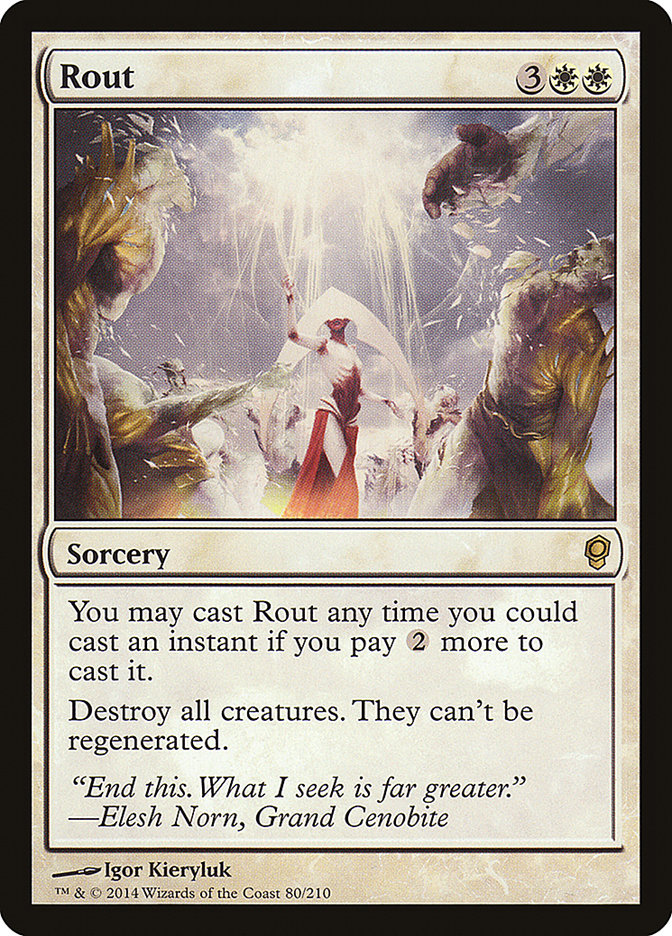
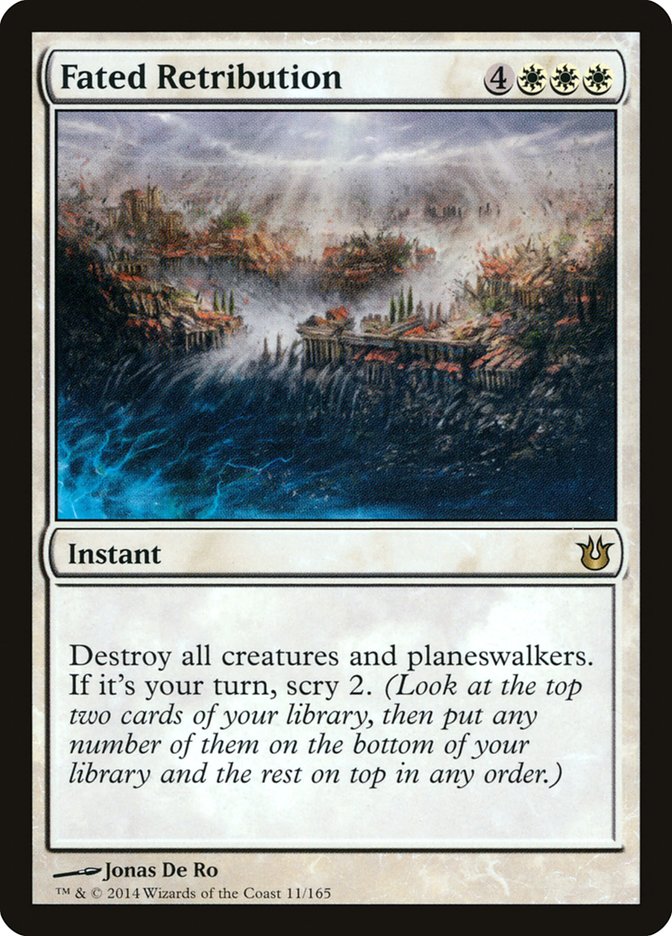
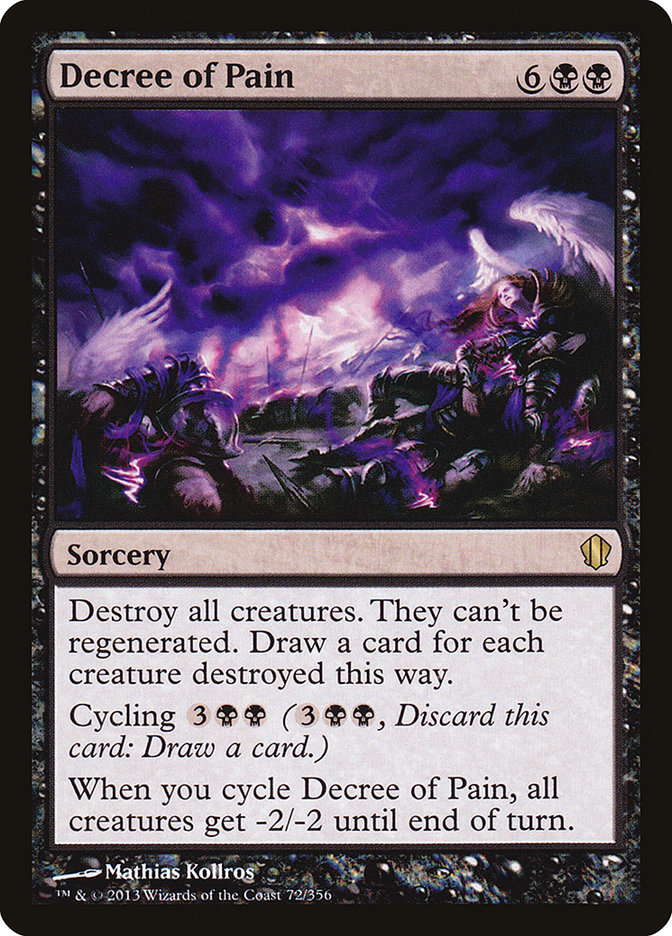
This is adding a lot of power to your Wrath suite, without spending a lot to do so – ideally, I’d like to add Austere Command and Oblivion Stone as well,
but as far as price per wallop goes, these three have a huge impact and you can have all three of them for less than $5 of your budget… and
would be aiming to play them regardless. Rout and Fated Retribution both play at instant speed, which is critical, and since you’re not really playing
Planeswalkers (you have a copy of Jace, Architect of Thought, yes… but we cut Gideon Jura for just not being very good in your sort of deck without much
to protect him with, so really it’s just the one) the ability to sweep away all opposing planeswalkers is critical, since you’re not really able to
consistently pressure them via the attack phase.
Having access to mass removal at instant speed is the most important part of playing control in this format, because big swingy turns are just one of those
things this format is designed to do, and slower removal spells would just leave you dead as you stare at them when that big hasty Living Death turn
happens. Bad things happen in this format a lot, and for a reason – you’d best come prepared.
Blind Obedience – Speaking of being prepared, I have found myself consistently impressed by this little card and how it switches around the tempo of the
game in your favor. Suddenly that lethal Living Death turn? Not so big an issue anymore, because tapped creatures can’t attack. Extort is incredible with
Oloro as well, but has the misfortune of generally being a word printed on crappy creatures that don’t fit what you’re trying to do with your deck. Blind
Obedience lets you attach bonus damage and extra lifegain – and thus extra cards thanks to Oloro – to every spell you play, which can potentially
start to snowball as playing cards draws you more cards… where’s the limit? Who knows, it’s turtles all the way down!
Closers
So we’ve got the board control elements firmed up, and now we need to kill the opponent somehow. The critical part here is that we’ve got to significantly
improve the quality of the creatures you’re playing – Pilgrim’s Eye and Sea Gate Oracle aren’t ever going to put anyone under meaningful pressure, we need
something that can close out a game once you’ve crafted the opportunity to get ahead in it. Part of that’s going to be sheer creature count – those four
land slots we’ve cut would be well-served as creatures to finish the game with, allowing the deck to hit a more natural balance and have a finisher ready
to go every time it wants one. And we’re going to allow ourselves to be a bit spendy here by comparison, almost 50% of the limited budget we do
use is going into this section, because we want the threats section to overlap with the board control elements and let us access a class of threats that
can play just one card and get an entire board’s worth of dangerous permanents out of it.
OUT:
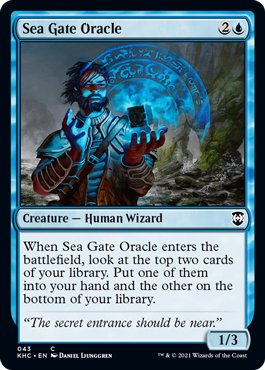
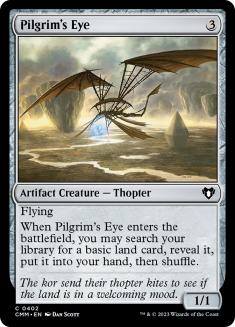
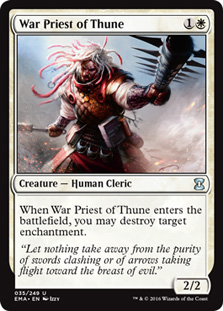
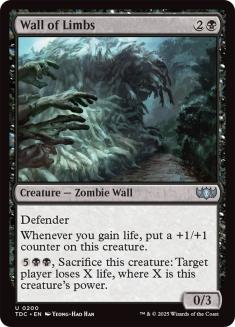
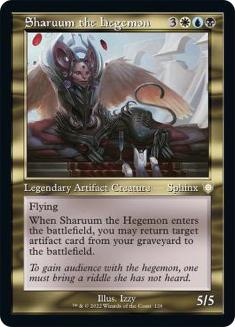
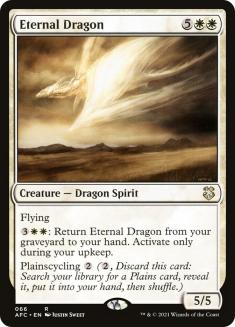
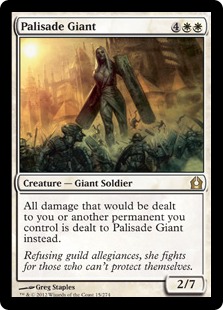
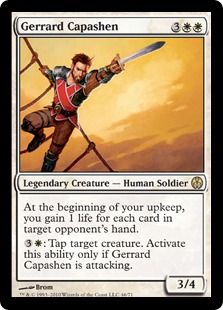
IN:
Azorius Guildmage – Never underestimate the quality of a solid utility creature. Azorius Guildmage plays Stifle to activated (though not triggered)
abilities or plays Icy Manipulator to opposing attackers, potentially slowing down an opponent off to a quick start or harassing somebody’s key effects as
they try to build up their board… and the more mana you have, the better it gets. Late in the game, this Guildmage can hold down two or three powerful
creatures, forcing opponents to commit more and more resources to the board before you wipe them out – it’s solid at any stage in the game and allows you
to interact with a class of effect you normally wouldn’t be able to stop.
Draining Whelk – I like attacking in the air with my Counterspells. I think you’ll like it too.
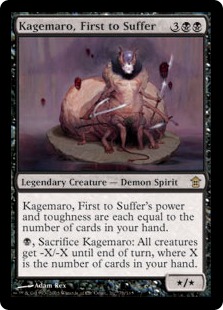
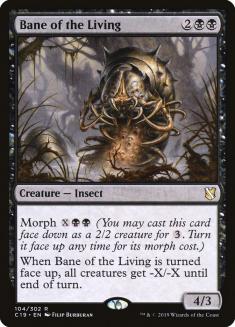
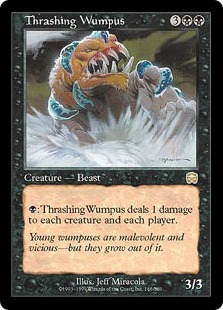
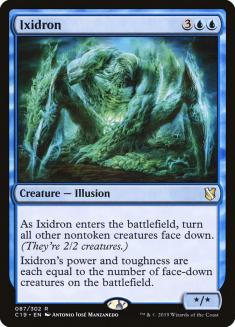
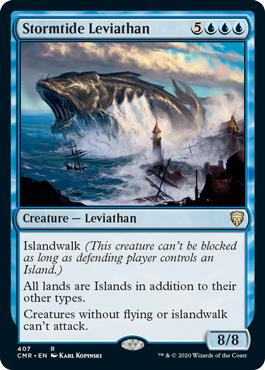
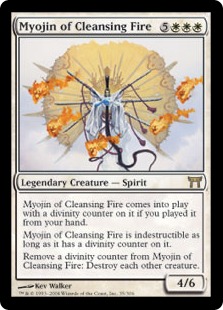
Each of these is a powerful, and affordable, board-control creature that can advance your board and play removal at the same time in one form or another. Thrashing
Wumpus lets you pressure Planeswalkers without the attack phase or keep token strategies in check turn after turn even better than Massacre Wurm would,
while Bane of the Living, Kagemaro, and Myojin all sweep the board in one way, shape, or form that should generally end with all opposing creatures removed
from play. Ixidron answers problems in an unique way – not by removing the card from play (and thus putting it in a zone from which it could be recurred
somehow) but by putting it face-down, turning it into a generic morph instead of whatever mighty monster it used to be… and thus is a sort-of Wrath
effect, even if it isn’t exactly one. And then there is Stormtide Leviathan, a mix of unblockable creature and effective Moat that protects you from ground
pounders at the same time as it attacks for eight.
Keiga, the Tide Star – Keiga has a storied history of being a potent control monster; sure, your opponent can punish you for tapping out to play your
Dragon, maybe… but even if they do, you get their best creature right away to defend yourself with and then go right back on the offensive.
While it is “just” a Control Magic-style two-for-one when that happens, that effect is so much more powerful than it sounds considering the quality of the
Dragon and the tempo-positive power of the trigger. All three Kamigawa dragon legends in your colors would be worthy of consideration, but Keiga is the one
that most clearly deserves the spot for what you’re trying to accomplish.
Patron of the Kitsune – Oloro likes lifegain, a lot. In fact, lifegain does naughty, naughty things with Oloro out, especially if you’re
able to get multiple triggers per turn. Patron of the Kitsune gives you a life when any creature attacks – yours or an opponent’s – and each one
of those triggers is potentially a life gained for you, a life lost for each opponent, and a card in your hand, for one mana per trigger. Things
can very quickly get out of hand with Patron alongside Oloro, and at the very least it will ensure that you have a lot of fun and a lot of resources.
Our last two slots are the special haymakers I’m aiming for you to rely on to close out a game:
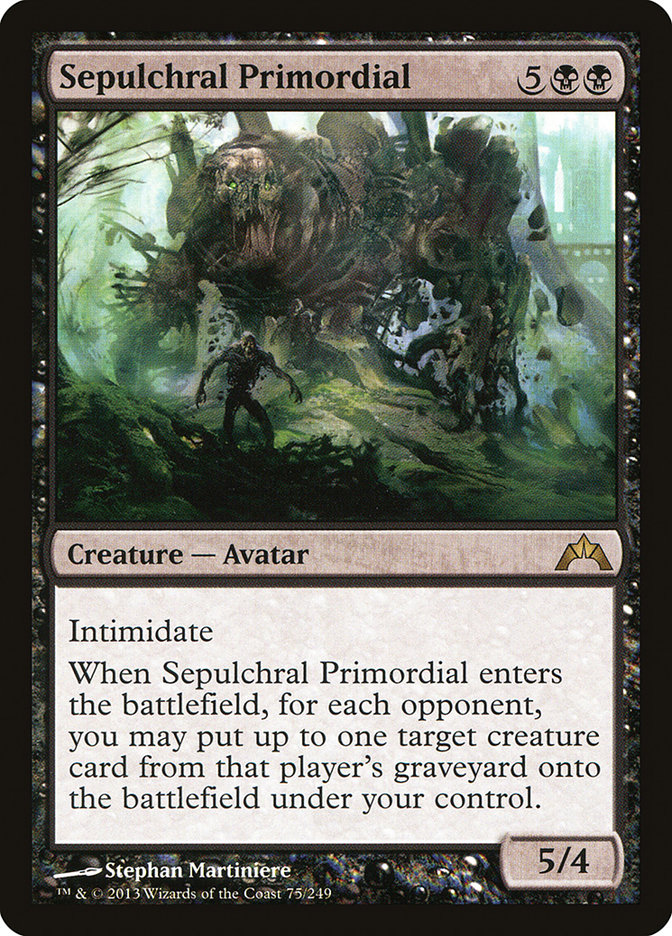
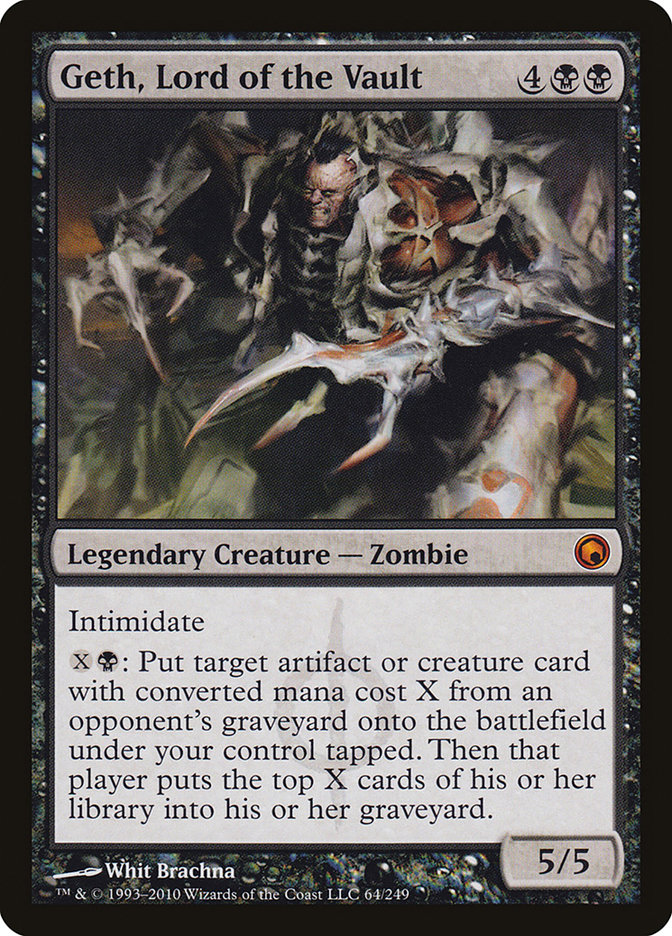
Both of these two bring a powerful board with them, assuming your deck has been doing its job and opposing threats have been presented and then removed
from play. Leave Geth alone for even a turn and you will see a silly amount of board presence pop out of nowhere; as a side bonus, it’s even possible to
mill someone out with him! Sepulchral Primordial is the less-powerful of the two, but it’s more powerful in the immediate short term – sure, it
can’t put an arbitrarily large number of creatures into play under your control turn after turn, but it does put the best creatures in each of
your opponents’ graveyards into play right now for no additional mana. Either of these demands a Wrath by themselves, which means you can sculpt a
late-game alpha-strike around casting one of these, having the counter for their sweeper, then just murdering them to death in one swing. We’re trying to
solve the problem of closing out the game, and while Geth is the most expensive card we’re adding, he’s also the best he is at what he does. (And what he
does is quite nice indeed, thanks for asking!)
Putting it all together, we get the following:
Creatures (18)
- 1 Patron of the Kitsune
- 1 Myojin of Cleansing Fire
- 1 Keiga, the Tide Star
- 1 Bane of the Living
- 1 Thrashing Wumpus
- 1 Kagemaro, First to Suffer
- 1 Azorius Guildmage
- 1 Draining Whelk
- 1 Ixidron
- 1 Archon of Justice
- 1 Thada Adel, Acquisitor
- 1 Ajani's Pridemate
- 1 Stormtide Leviathan
- 1 Geth, Lord of the Vault
- 1 Rhox Faithmender
- 1 Sepulchral Primordial
- 1 Vizkopa Guildmage
- 1 Daxos of Meletis
Planeswalkers (1)
Lands (39)
Spells (41)
- 1 Counterspell
- 1 Control Magic
- 1 Opportunity
- 1 Diabolic Tutor
- 1 Winds of Rath
- 1 Decree of Pain
- 1 Well of Lost Dreams
- 1 Crawlspace
- 1 Arcane Denial
- 1 Oblation
- 1 Snuff Out
- 1 Dromar's Charm
- 1 Spinal Embrace
- 1 Rout
- 1 Probe
- 1 Dismantling Blow
- 1 Deep Analysis
- 1 Overwhelming Intellect
- 1 Dimir Signet
- 1 Remand
- 1 Orzhov Signet
- 1 Azorius Signet
- 1 Condemn
- 1 Cradle of Vitality
- 1 Armillary Sphere
- 1 Day of Judgment
- 1 Swiftfoot Boots
- 1 Druidic Satchel
- 1 Scepter of Empires
- 1 Crown of Empires
- 1 Throne of Empires
- 1 Murder
- 1 Azorius Charm
- 1 Underworld Connections
- 1 Blind Obedience
- 1 Render Silent
- 1 Far
- 1 Fated Retribution
- 1 Extinguish All Hope
- 1 Silence the Believers
- 1 Aetherspouts

As always, for your participation in this week’s edition of Dear Azami you will receive a $20 coupon to the StarCityGames.com Online Store; these 42 alterations cost $43.56, so that coupon should cover just about half of your cards (give or take a little) and the rest should be a laid-back and friendly bit of pocket money to get the deck all the way into fighting form. And hopefully it will be able to answer your brother’s challenge to play control – as an itinerant beatdown player, figuring out how to slow down and win eventually instead of maybe win now like the aggro deck tries to will be a challenge, but in this form it should be able to win that fight at least some of the time, and thus figuring out how to make a plan around the cards this deck gives you to work with should help teach you what a control player prioritizes and how to win the game from the control players’ seat.
Pricing them out individually, these changes cost as follows:
| Card: | Price: |
| Probe | 0.15 |
| Armillary Sphere | 0.25 |
| Dismantling Blow | 0.25 |
| Opportunity | 0.25 |
| Orzhova, the Church of Deals | 0.25 |
| Terramorphic Expanse | 0.25 |
| Azorius Chancery | 0.49 |
| Azorius Signet | 0.49 |
| Condemn | 0.49 |
| Control Magic | 0.49 |
| Deep Analysis | 0.49 |
| Fated Retribution | 0.49 |
| Jwar Isle Refuge | 0.49 |
| Orzhov Basilica | 0.49 |
| Orzhov Guildgate | 0.49 |
| Orzhov Signet | 0.49 |
| Overwhelming Intellect | 0.49 |
| Patron of the Kitsune | 0.49 |
| Sepulchral Primordial | 0.49 |
| Stormtide Leviathan | 0.49 |
| Azorius Guildmage | 0.75 |
| Snuff Out | 0.75 |
| Arcane Denial | 0.99 |
| Bane of the Living | 0.99 |
| Counterspell | 0.99 |
| Dimir Aqueduct | 0.99 |
| Dimir Signet | 0.99 |
| Ixidron | 0.99 |
| Murder | 0.99 |
| Thrashing Wumpus | 0.99 |
| Well of Lost Dreams | 0.99 |
| Arcane Sanctum | 1.49 |
| Blind Obedience | 1.49 |
| Command Tower | 1.49 |
| Kagemaro, First to Suffer | 1.49 |
| Oblation | 1.49 |
| Rout | 1.49 |
| Decree of Pain | 1.99 |
| Myojin of Cleansing Fire | 1.99 |
| Draining Whelk | 2.99 |
| Keiga, the Tide Star | 3.99 |
| Geth, Lord of the Vault | 4.99 |
And in the spirit of this transition you’re making, going from control player to beatdown, I thought I should consider taking a trip in the opposite direction myself – I tend to aim to play a game somewhere around an hour or two where I grind opponents out in controlling fashion before my plans have come to fruition and I’m able to both take control and capitalize on that moment with overwhelming force. Being the beatdown for once would be a challenge for me – and building a new deck to take that challenge up might be an interesting topic for one of my next articles. So I’ve included a poll below, listing five Commanders I might consider building around so I could be the beatdown… who do you want to see me get my hands on and see what I can do with ’em?
Want to submit a deck for consideration to Dear Azami? We’re always accepting deck submissions to consider for use in a future article, like Adam’s Yeva, Nature’s Herald deck or Alex’s Karametra, God of Harvests deck. Only one deck submission will be chosen per article, but being selected for the next edition of Dear Azami includes not just deck advice but also a $20 coupon to StarCityGames.com!
Email us a deck submission using this link here!
Like what you’ve seen? Feel free to explore more of Dear Azami here, in the Article Archives! Feel free to follow Sean on Facebook… sometimes there are extra surprises and bonus content to be found over on his Facebook Fan Page, as well as previews of the next week’s column at the end of the week!
